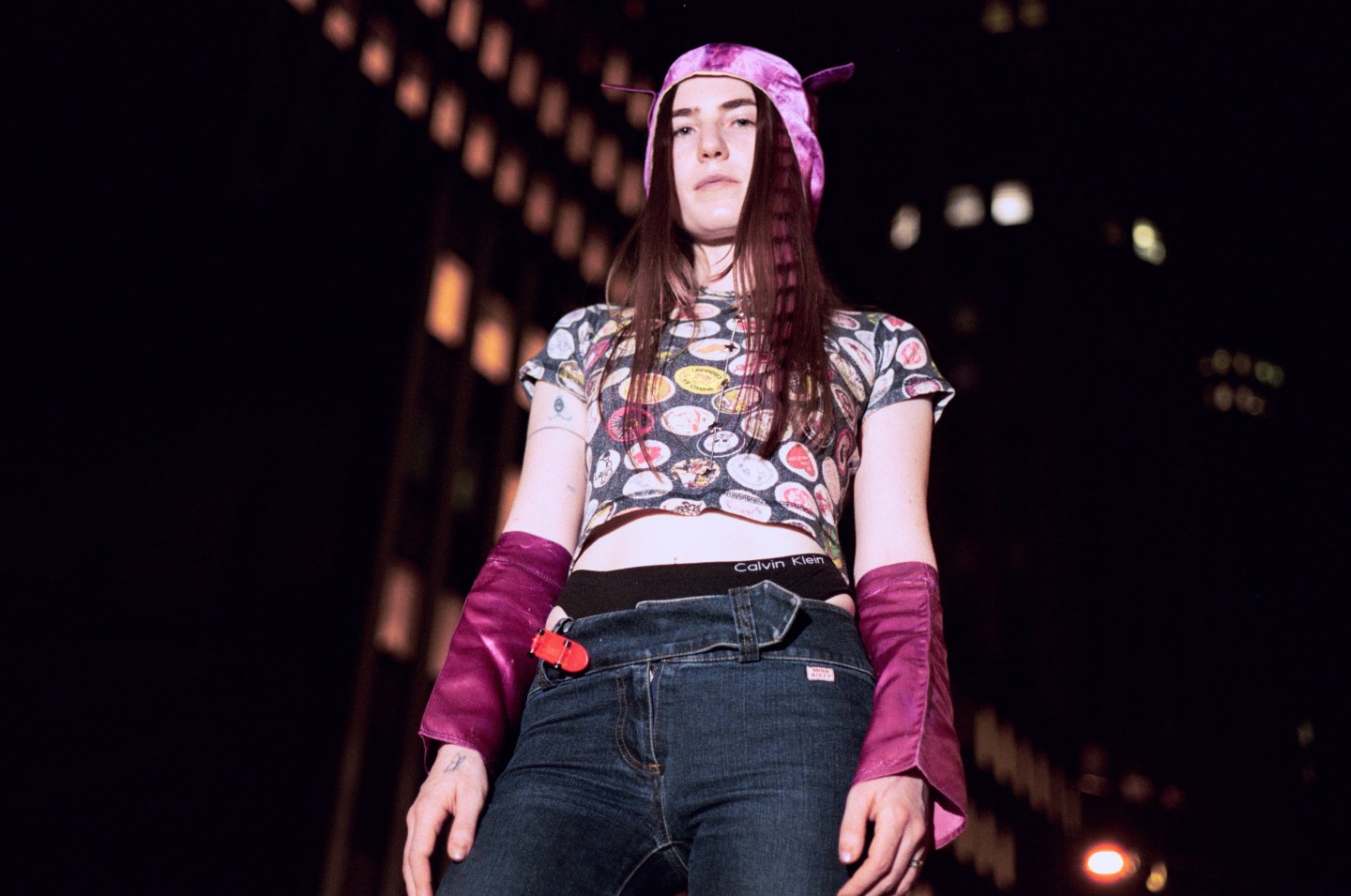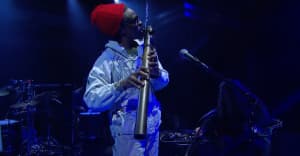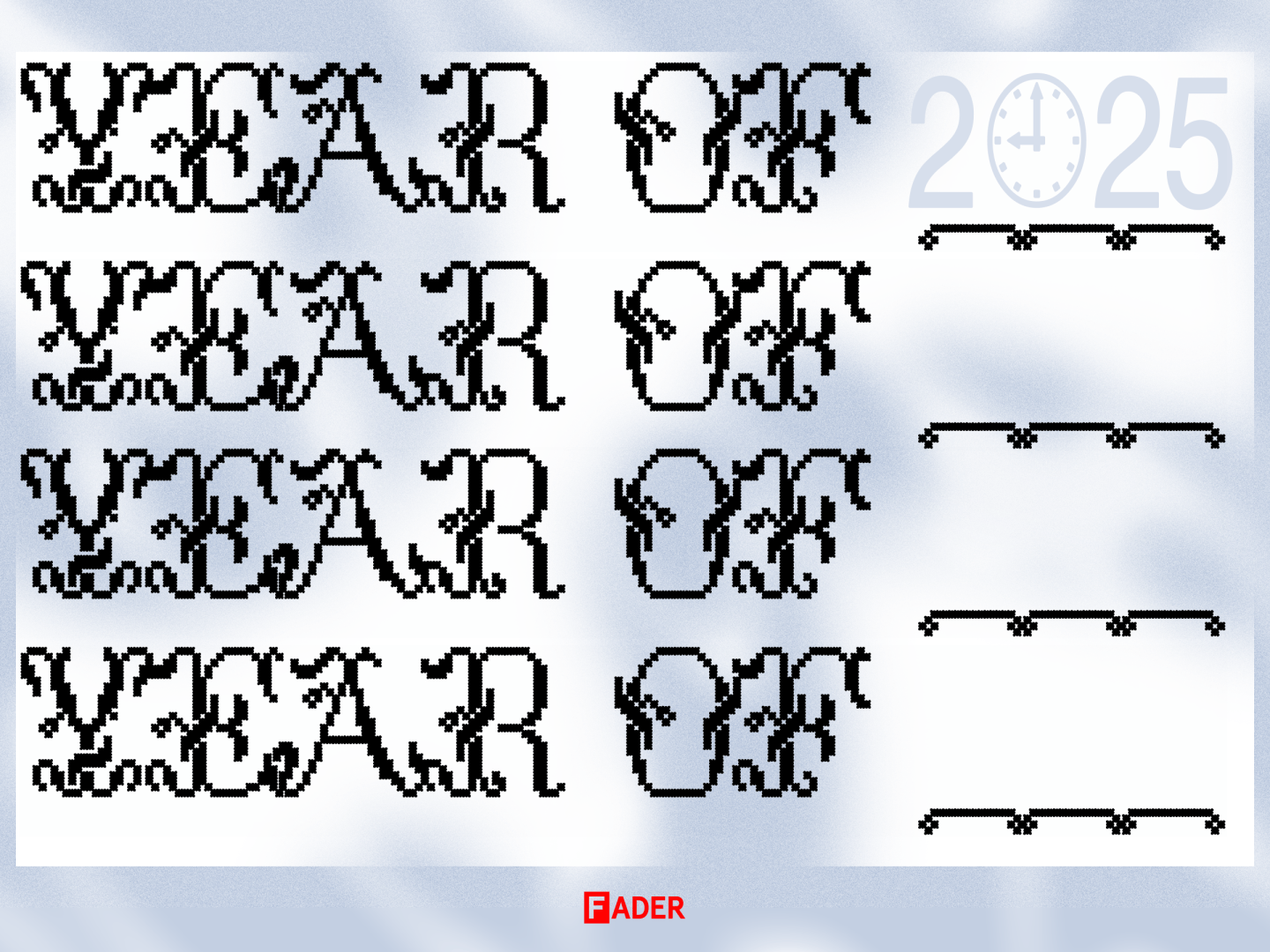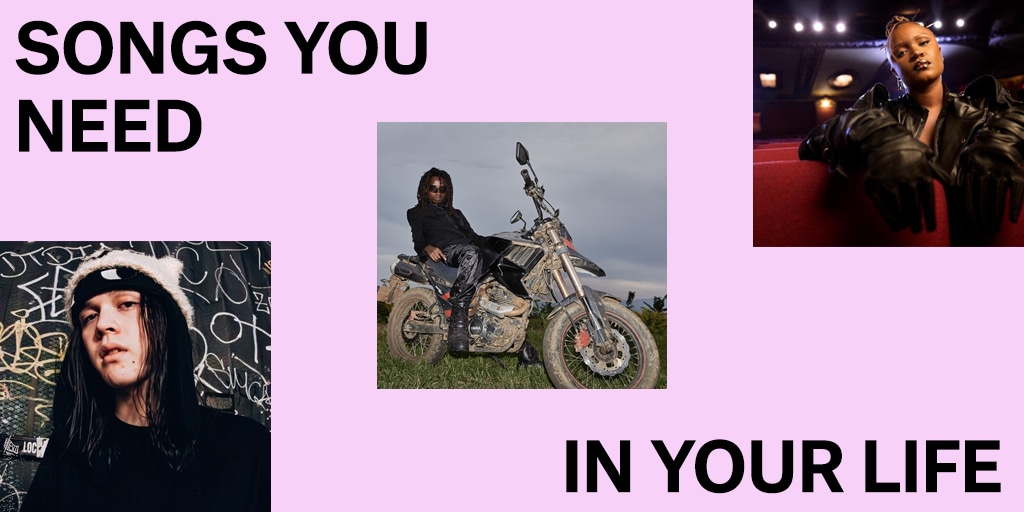james K is sitting cross-legged in the middle of her Ridgewood, Queens, bedroom walking me through a particularly intense stretch of time from her graduate art program at the Rhode Island School of Design. In her lap curls a purring black-and-white kitty named Pingu, and as she talks a mile a minute, absent-mindedly petting Pingu, she drops phrases like “pedagogy” and “access points” and “finding your narrative,” while explaining how that period in academia influenced her glitchy, sound-collage album, Random Girl from 2022.
“People were really pushing more abstraction, go deeper, get weirder, get weirder,” she says, leaning back onto a plush, tufted ottoman. “I had to take a step back and think Where do I want to go moving forward? I wanted to be more direct.”
For Jamie Krasner — a producer and musician with a formal arts background and who’s been building avant-garde electronic soundscapes as james K for nearly a decade now — being “more direct” is her equivalent of making a capital-P pop album. Her new record, friend, released September 5, isn’t a Taylor Swift heel turn, but compared to her previous experimental offerings it’s some of her most direct-to-the-heart songmaking. Tracks like the whimsically titled “Hypersoft Lovejinx Junkdream” and “Blinkmoth (July Mix)” whip up vivid scenes of purple-hued breakups and longing and cryptic dreaming through deliriously meshed trip hop, dream pop and shoegaze. The album’s highlight “Play,” an ever-rising rush of jungle ecstasy, holds her most chant-along-able lyric yet: “Hold on for life.”
Krasner grew up in upstate New York and has been grinding in the N.Y.C.-underground for years. A DJ on the side, she says her goal is to make music that feels like a “wave of emotion,” a portal that builds connection and community, on the dance floor and off. With friend, a labor of love in collaboration with peers from Montreal and New York City, she achieves the most realized vision of that ethos, not just among her own catalog but all the pop albums released in 2025 so far.
Ahead, read our conversation with Krasner about her love for Addison Rae, building community through music, decentering the individual in pop, and why she still has hope for New York City’s nightlife scene.
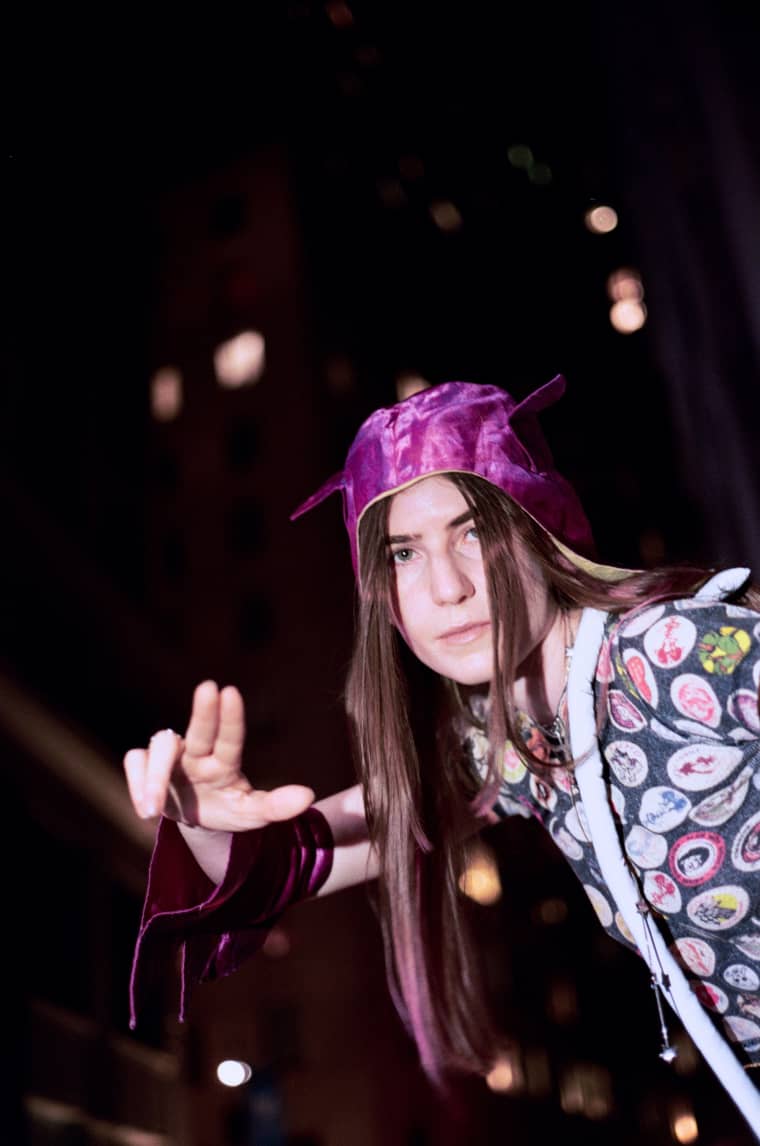
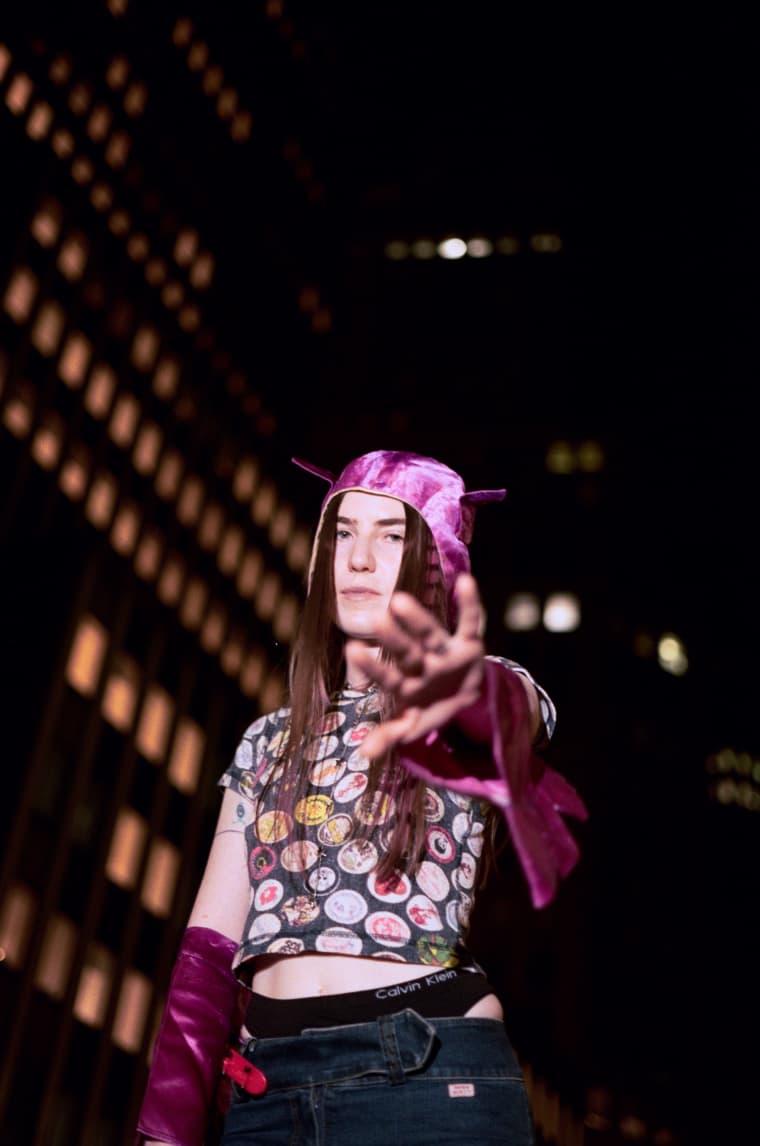
The FADER: People have compared your music to collages. What draws you to the act of combining ideas to create a cohesive message or feeling?
james K: It feels so natural that I don’t even think about it that often. What I love about this idea of bringing various references together is the moment where those relationships create something new. That’s the culture we live in right now. We have so much access as people to information that artists out there, how they approach work, is pulling from various things and creating this amalgamation of something new and something novel that feels familiar, but it’s actually this new iteration.
What was the collage you were making on friend? You made it with a lot of friends, it’s very collaborative.
With this record, I really wanted to focus on seamlessly combining things into more direct formats. I wanted people to be able to access the emotion more directly. I started connecting with people, producers that I really [wanted to work with]. Working with other people and having their skill sets, it’s beautiful. It brings everything to this collective place and I think coming back to the beginning of your question, that is what the record is about: it’s about connection. It’s a love letter to the community that I’m a part of, and these people being a part of that.
I felt like it was the first time in my life where I [could] make music and be more loving and have that music come from that space of understanding myself more fully and accepting. And it’s not like I’m only [singing] about bliss and joy. I’m talking about pain.
It’s about connection. It’s a love letter to the community that I’m a part of, and these people being a part of that.
That reminds me of your song “Play,” which is about the end of a relationship but there’s a tenderness and softness about it. In a moment where everything feels so fractured, what did it mean for you to intentionally make music that speaks to community?
I think people are resonating with it because of the moment. I’ve been making this type of music for a long time and there are a lot of times I’ve had people be like, oh, it’s really uncomfortable because it makes me feel. I feel very glad that people can find some kind of connection that maybe they don’t have in their community, because music can do that. Music can really be that friend and, not to be so cheesy about the title, but it means a lot of things to me. I want to connect with people and I’m thinking about that when I’m making music.
At the end of shows quite often, people will say it made everyone cry, but like in a good way. I think that’s the power of music. I see it as clarity and facing yourself. It’s about being present. I think the best pop music is kind of creating a juxtaposition of both. There’s this trauma, kind of like tragedy to it, but also this joy and playfulness to it and that’s what I’m trying to do with music.
Have you heard Addison Rae’s new album?
I have it right there, literally look [she points out her ‘Addison’ CD on her side table]. I literally was gonna say that and I was like, “I don’t know if I should reference Addison Rae,” but actually that is what’s so amazing. There’s this tragedy in her and I think that translates. She’s real, there’s a realness to it.
That line in “Headphones On” when she says, “I wish my mom and dad could’ve been in love…”
I think about it all the time. It isn’t about something being so polished, but polished with a little bit of tension in there. There’s a willingness to see yourself and reflect on yourself and that’s why I feel connected to what she’s doing. There’s the choreography, which is honestly amazing, and then there’s the playfulness, and she’s enjoying herself and that’s so relatable. And then there’s the tragedy. There’s “I’m not perfect and I’m actually gonna tell you that and I’m gonna be OK.” I think there’s something really resonant about what she’s making.
People put too much emphasis on the individual and that’s [why] I was never into pop music.
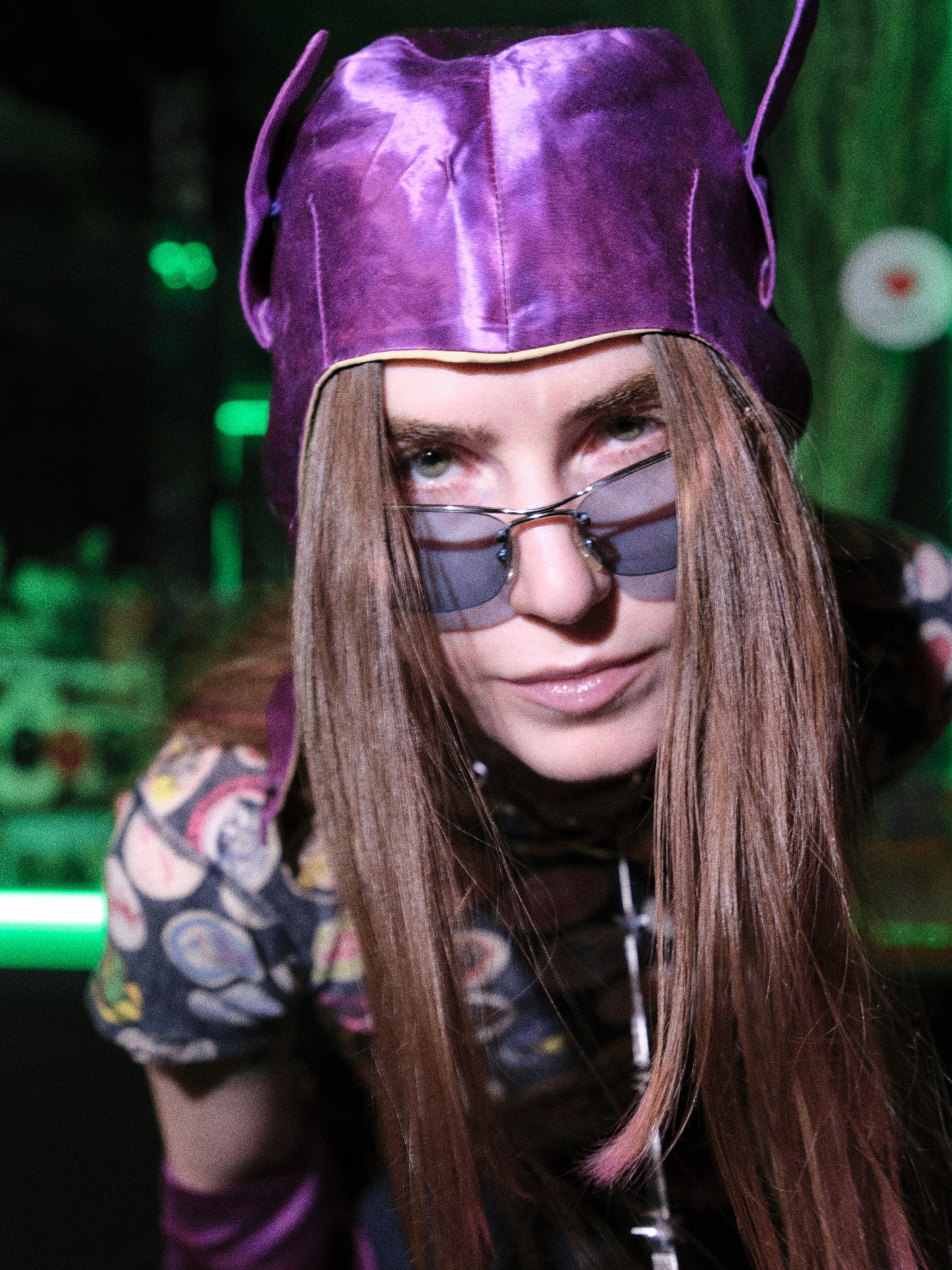
You keep your face away from the project. Is that an intentional thing?
That’s super intentional. That’s just my ideology with things. When I moved to Berlin in 2012 to hear things on proper sound systems, [I had a] process of realizing, “Oh these spaces are creating portals for people.” That’s what I love about dance music and these scenes. It’s decentralized, it’s not about the individual. Pop music is about the individual. It’s about the spectacle and I think that individualism I find problematic in our society. People put too much emphasis on the individual and that’s [why] I was never into pop music. The idol worship part of it it’s never been my thing. So yeah, I’m not focused on my face or my body.
You’ve been in New York City for almost a decade. People have talked about how New York City’s rave scene has changed. From your perspective, what do you make of the state of dancing and clubbing right now?
As I was living [in Berlin], I saw DJ culture blow up in a way like… it was really, really mainstream. I mean, Berghain became mainstream as I was there. When I first lived in Berlin, I would go to Berghain by myself and just find friends and meet people. It really this heady space of like, “this is an alternate lifestyle.” These are people who believe in something. And then, you know, it’s what everything that’s good does when it starts to get more popular, it becomes corporatized. Berlin club culture is in that place right now where it’s kind of a parody of itself. It’s been in the John Wick movie, Lady Gaga played [Berghain].
When I moved back to New York in 2018, [it felt like there was] a spark. I was actually extremely excited because it was really vibrant again and I think people were so wanting this space for so long and it had finally arrived that it was incredible. I think we’ve been on a path that’s always going to be the same path, where it becomes more known and becomes more known and then [there’s] different people. It is just like the path of capitalism and how it operates. But I will say there are nights where I still see people dancing. It depends on where you go. It’s still there because people want it to be there. What I love about this dance community is that I know there’s always going to be some kind of rave happening or some kind of festival popping up. Nothing ever lasts. It is a cycle.
Art Direction by Isha Dipika Walia and james K
Styling by Mai Toyoshima and james K
Hair by Takayuki Umeda

